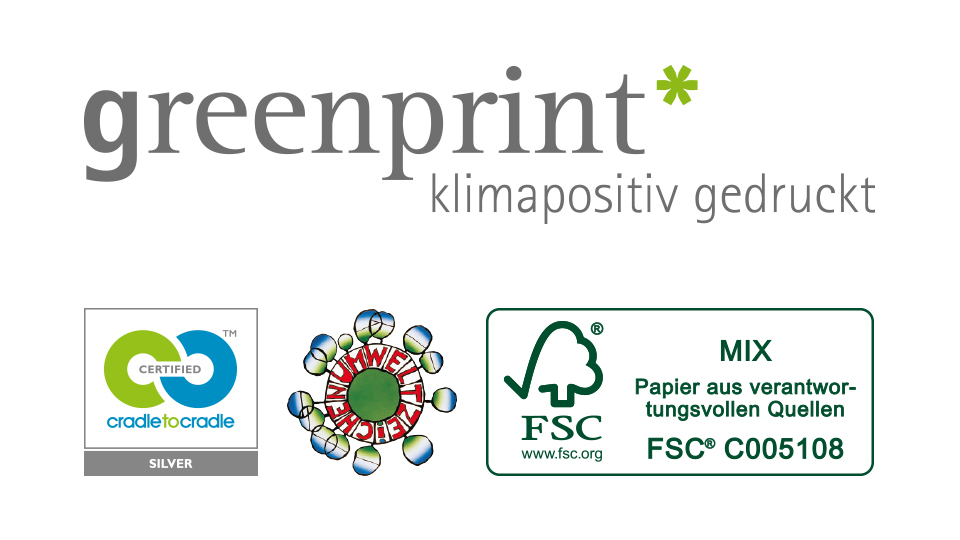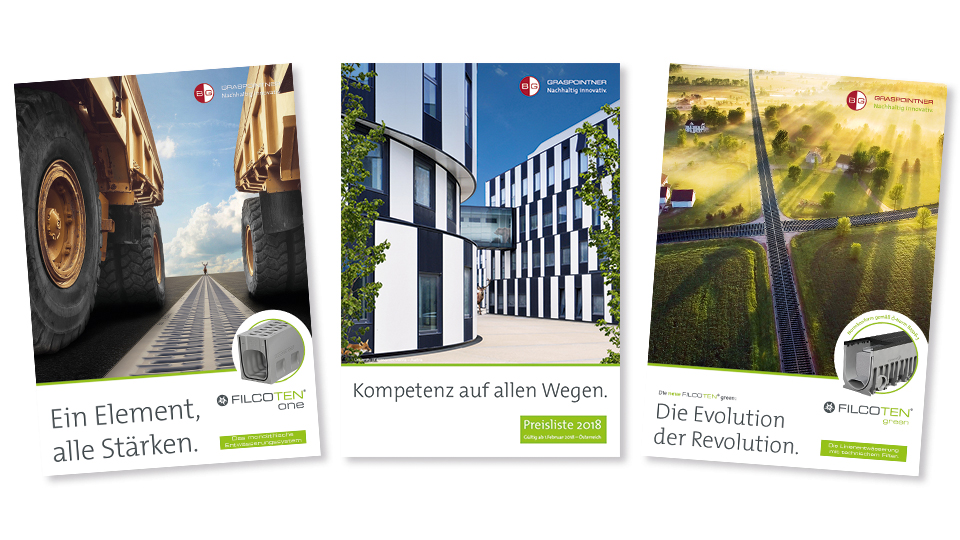Everyone likes to be sustainable. We are taking it seriously, and we’re also making our approach transparent for print products.
Ecological print products
Green means go!
Ecological print products
Green means go!

In order to produce truly sustainable print products, we have been working exclusively with the printing company gugler since 2017.

A match made in heaven: With his company, founder Ernst Gugler has committed himself to the strictest criteria for sustainability.

It is the only printing company in the world to meet the high requirements of the Cradle to Cradle® concept.

Cradle to Cradle® means that already during a product’s concept phase it is a key factor that all components are 100 % recyclable – either as food or compost or as a source material for a new product.

In addition, there are strict criteria regarding energy resources, social matters and waste water. For this reason, gugler only uses renewable energies.

The requirements are particularly strict: If it’s not proven to be harmless, it cannot be used. Untested substances are not included – considerably more effort, but it’s worthwhile.

With every print job, we acquire additional certificates worth 10 % of the order volume. This makes us climate-positive printers.

Everyone likes to be sustainable. We are taking it seriously, and we’re also making our approach transparent for print products.

In order to produce truly sustainable print products, we have been working exclusively with the printing company gugler since 2017.

A match made in heaven: With his company, founder Ernst Gugler has committed himself to the strictest criteria for sustainability.

It is the only printing company in the world to meet the high requirements of the Cradle to Cradle® concept.

Cradle to Cradle® means that already during a product’s concept phase it is a key factor that all components are 100 % recyclable – either as food or compost or as a source material for a new product.

In addition, there are strict criteria regarding energy resources, social matters and waste water. For this reason, gugler only uses renewable energies.

“FILCOTEN® HPC is only the beginning. Our ecological orientation is also reflected in other areas. As an example, since mid-2017, we have been working exclusively with the renowned printing company gugler to produce our print products.”
“To us, it makes sense to have a partner who shares our values and whose standards regarding ecological action are just as strict as ours. Being verifiable is especially important to us. This is how we distinguish ourselves from those who just pretend to take ecological responsibility seriously.”

“Cradle to Cradle® only approves substances that are proven to be harmless. Substances that have not been proven to be harmless or that have not yet been examined are not permitted.”
“For Cradle to Cradle® products, these color residues become organic sewage sludge that could nourish the next set of growing trees on fields and meadows. However, since there is no separate, self-contained recycling system for Cradle to Cradle® paper waste, these harmless printing by-products are simply included in the normal recycling loop, merely reducing its toxicity.”
“Of course, we decided in favor of this option.”
Marcus Renn
Head of Marketing
International

